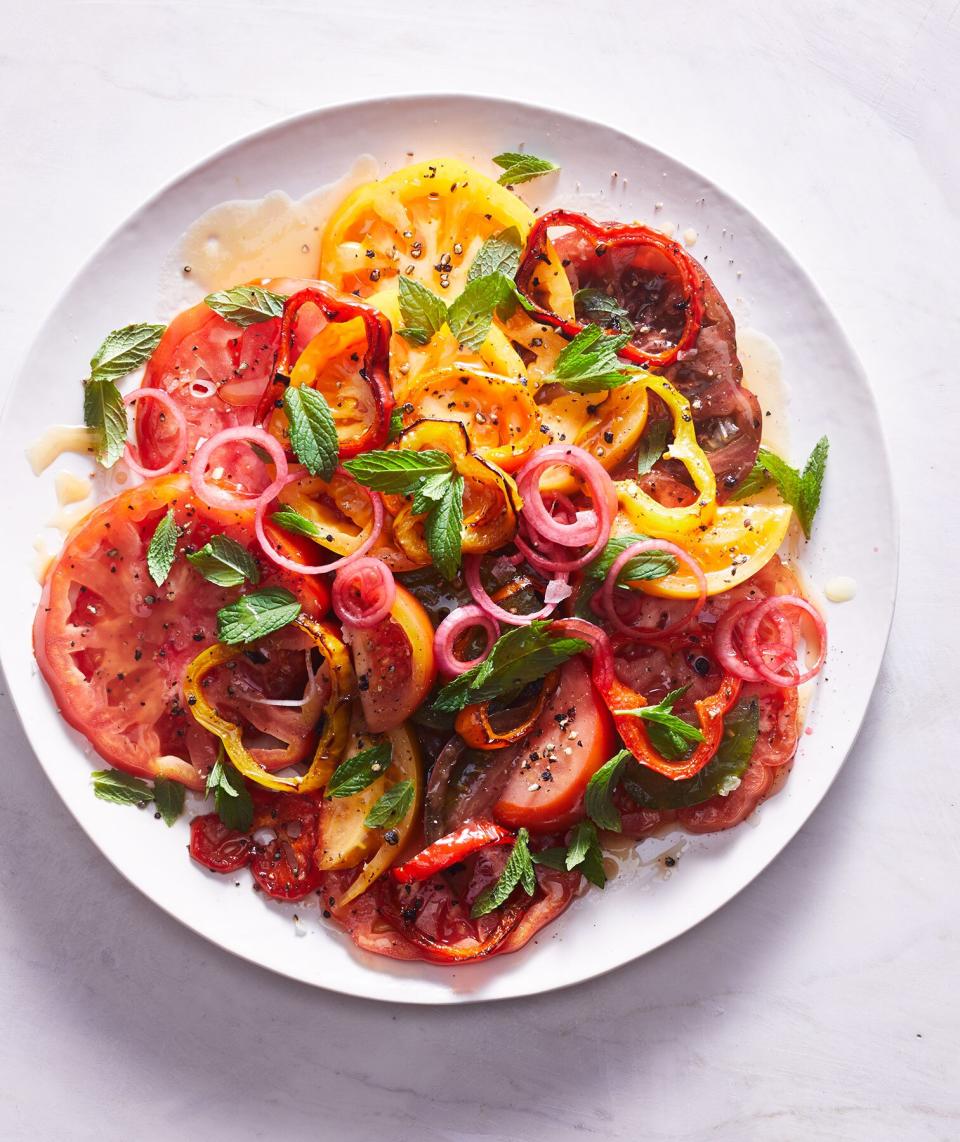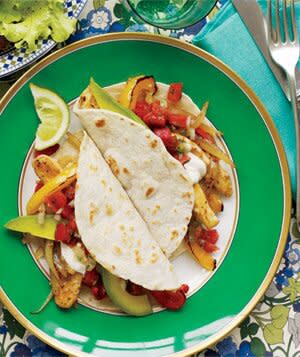5 Nutritious Reasons to Keep Crunching on Bell Peppers
Bell peppers are one of those ubiquitous vegetables you'll find in everything from a crisp, fresh Greek salad to a baked-and-stuffed weeknight entree to colorful party veggie trays for a healthy group snack. They're an incredibly versatile vegetable that come in several colors, and you may be wondering what its main health benefits are or if it's possible to have too much of a good thing. Here, three dietitians break down all the beneficial reasons to snack on and cook with more bell peppers.

Getty Images
Bell Pepper Nutrition Benefits
Bell peppers are good for heart and digestive health.
It should come as no surprise that bell peppers are another extremely healthy vegetable, whether you're opting for green, red, yellow, or orange varieties. All bell peppers provide fiber, some iron, and folate to support a healthy gut, healthy cardiovascular system, and proper natural detoxification, says Lauren Minchen, MPH, RDN, CDN, nutrition consultant for Freshbit, an AI-driven visual diet diary app.
Bell peppers are rich in potassium.
"Peppers, no matter the color, are a great source of potassium and vitamin A," adds Brigitte Zeitlin, a New York City-based registered dietitian and founder of BZ Nutrition. "Potassium helps to keep your heart healthy by lowering blood pressure and fight belly bloat by reducing water retention."
Bell peppers are good for your eyes.
This crisp veggie contains vitamin A, which "helps to maintain eye health, keeping your vision on point," Zeitlin says.
Bell peppers are high in antioxidants.
"Red bell peppers are also rich in vitamin C and various carotenoids, which function as antioxidants and support eye and cardiovascular health," adds Minchen. "Yellow/orange bell peppers provide beta-carotene (an antioxidant form of vitamin A), vitamin C, and potassium."
Bell pepper has some skin benefits.
"Eating green and yellow veggies, such as green and yellow bell peppers, may help decrease the wrinkling that can occur in the crow's foot area, according to a study of Japanese women," adds Amy Gorin, RDN, a plant-based registered dietitian.
How much pepper should you eat?
Believe it or not, it's possible to overdo it on the bell peppers (as with anything), Michen says. "Eating too much bell pepper can mean less intake of other essential nutrients, which may lead to nutrient deficiencies in the long term," she explains. "Also, bell pepper intolerance is quite common (they are in the nightshade family), which means that those with an intolerance may be able to only eat a small amount before they experience digestive and other inflammatory symptoms." As such, Minchen recommends limiting your bell pepper intake to just one per day. But in any case, talk to your doctor or dietitian if you've experienced these symptoms and suspect you may have an intolerance.
Delicious Ways to Enjoy Bell Peppers
Peppers are uniquely versatile too so they are great in so many dishes whether it is a salad, sandwich, burger, omelet, or roasted veggie medley—peppers are a natural addition, Zeitlin says.
Minchen has several recommendations of her own, including bell peppers stuffed with bell ground beef or poultry, a whole grain, cheese, and other vegetables; sliced raw bell peppers with yogurt dip, guacamole, or hummus for a healthy snack; and stir-fried sauteed bell peppers combined with protein and other vegetables. Gorin recommends adding sliced bell peppers to a fresh summer salad, a creamy rice dish, or a vegetarian lentil dish.
Read on for more recipes that incorporate this sweet, healthy, flavorful veggie.
Sweet Bell Pepper and Tomato Salad With Mint
Broiling the peppers softens them and brings out their natural sweetness, which perfectly complements the tangy quick-pickled shallots and fresh, juicy heirloom tomatoes.

Couscous-Stuffed Peppers
After browning a half-pound of ground beef and cooking a half-cup of couscous, you'll mix the two together with sliced scallions, crumbled feta, dried apricots, salt and pepper. Then all that's left is to hollow out four peppers, add the filling, and bake.

Sautéed Peppers and Onions
Get flavorful weeknight tacos on the table in under an hour with this chicken and pepper fajita recipe. Sweet peppers get tender and lightly charred, the perfect pair for savory spiced chicken. Don't forget to top with your favorite fixings.



